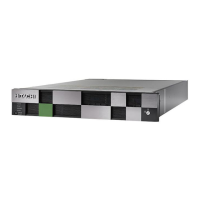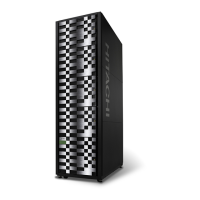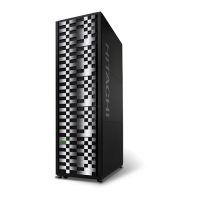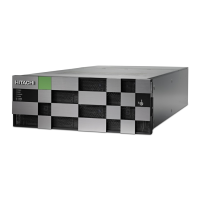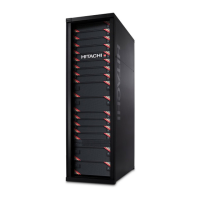3. In the TI Root Volumes tab, view the list of Thin Image primary
volumes.
Viewing pair properties
You can view pair properties and confirm the status of a volume in the View
Pair Properties window.
Before you begin
• You must have the Storage Administrator (Local Copy) role.
Procedure
1. In the Explorer pane, click Storage Systems, expand the storage
system tree, expand Replication, and then click Local Replication.
2. In the Local Replication window, select a P-VOL in the TI Root
Volumes tab or a snapshot group in the Snapshot Groups tab.
3. Click Operate TI Pairs.
4. In the TI Pairs window, select the pair you want to monitor, and then
click More Actions > View Pair Properties.
Related references
•
View Pair Properties window on page 242
Thin Image pair status definitions
The P-VOL and V-VOL access columns in the following table indicate whether
the volumes accept read/write.
For more information about the corresponding CCI pair command results, see
CCI pair command results on page 213.
The following table describes the Thin Image pair status definitions, the S-
VOL access for the status, and the corresponding status that is shown in CCI.
Pair status
Description S-VOL access
Status shown
in CCI
SMPL(PD) The pair is in the process of being deleted. You cannot perform
pair tasks when the pair is in this status, and you cannot
assign an S-VOL to snapshot data, release an assignment, or
change an assignment. When the process completes, volumes
are unpaired.
Read/write
disabled.
SMPL
1
SMPP
(VSP G1000,
G1500, and
VSP F1500)
The cascaded pair or the pair with the clone attribute is in the
process of being deleted. You cannot perform pair tasks when
the pair is in this process. When the process completes,
volumes are unpaired.
Read/write
disabled.
SMPL
1
COPY The storage system has accepted the paircreate CCI
command.
The P-VOL accepts read/write operations, but the S-VOLs do
not accept read/write operations.
Read/write
disabled.
COPY
160 Monitoring and maintaining Thin Image
Hitachi Thin Image User Guide for Hitachi Virtual Storage Platform G Series and F Series

